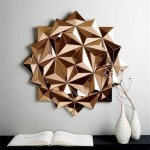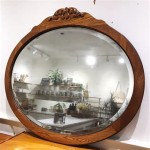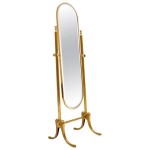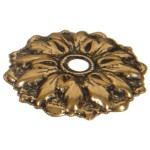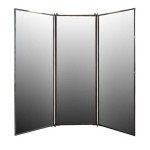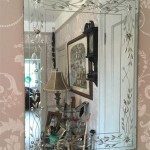Cobalt Blue Mirrors: A Reflection of History and Style
Cobalt blue mirrors represent a captivating intersection of artistry and history. Their vibrant hue and reflective surfaces have adorned homes for centuries, adding a touch of elegance and intrigue to various interior design styles. This article delves into the history, manufacturing process, and collectible nature of these striking pieces.
The Allure of Cobalt Blue
The distinctive cobalt blue coloration is achieved through the addition of cobalt oxide to the glass mixture during the manufacturing process. This technique dates back centuries, with evidence of cobalt-tinted glass found in ancient Egyptian and Mesopotamian artifacts. The intensity of the blue can vary depending on the concentration of cobalt oxide used, resulting in shades ranging from a delicate sky blue to a deep, rich sapphire.
Manufacturing Techniques Through the Ages
Historically, crafting cobalt blue mirrors involved meticulous skill and craftsmanship. Early methods utilized mouth-blowing or crown glass techniques, resulting in slight imperfections and variations in thickness, which are now often prized by collectors. The advent of industrial glassmaking in the 19th century led to more uniform production, making cobalt blue mirrors accessible to a wider audience.
Identifying Antique Cobalt Blue Mirrors
Several factors contribute to the identification of antique cobalt blue mirrors:
- Glass Quality: Examine the glass for bubbles, ripples, or other irregularities, which often indicate older, hand-blown pieces.
- Mirror Backing: Early mirrors utilized silvering techniques that can deteriorate over time, resulting in a characteristic foxing or spotting on the reflective surface.
- Frame Construction: The frame materials and construction techniques can provide clues to the mirror’s age and origin. Look for hand-carved details, joinery methods, and the type of wood used.
Distinguishing Reproduction Mirrors
The enduring popularity of cobalt blue mirrors has led to the production of numerous reproductions. While these can be attractive in their own right, it's important to distinguish them from genuine antiques. Reproductions often exhibit a more uniform color and glass thickness, lacking the subtle imperfections found in older pieces. The backing may also be more modern, using techniques that result in a flawless reflective surface. Carefully examining the frame for machine-made details can also help identify reproductions.
The Victorian Era's Embrace of Cobalt Blue
The Victorian era witnessed a surge in the popularity of cobalt blue glass and mirrors. The rich color aligned perfectly with the era's aesthetic sensibilities, and cobalt blue mirrors became a sought-after decorative element in Victorian homes. They were frequently incorporated into elaborate fireplace surrounds, dressing tables, and hallways, adding a touch of opulence and grandeur to the interiors.
Cobalt Blue Mirrors in Art Deco Design
The Art Deco movement of the 1920s and 1930s also embraced the use of cobalt blue mirrors. The bold color and geometric shapes characteristic of Art Deco design paired well with the sleek, reflective surfaces of these mirrors, creating a sense of modern elegance.
Collecting and Caring for Cobalt Blue Mirrors
Antique cobalt blue mirrors are highly collectible, and their value can vary significantly depending on factors such as age, size, condition, and rarity. When collecting these pieces, it's essential to thoroughly research their provenance and authenticity. Proper care is crucial for preserving their beauty and value. Avoid exposing them to direct sunlight, excessive humidity, and extreme temperature fluctuations. Cleaning should be done with a soft, dry cloth, avoiding harsh chemicals that could damage the delicate surface.
Integrating Cobalt Blue Mirrors into Modern Interiors
Cobalt blue mirrors continue to be a popular choice for interior design, seamlessly blending with various styles. They can serve as a striking focal point in a living room, add a touch of glamour to a bedroom, or create a sense of depth and light in a smaller space. The versatility of cobalt blue allows it to complement both traditional and contemporary aesthetics, making it a timeless and elegant addition to any home.
The Enduring Appeal of Cobalt Blue Mirrors
From their historical origins to their continued presence in modern interiors, cobalt blue mirrors hold a unique place in the world of decorative arts. Their rich color, reflective surfaces, and inherent versatility have captivated individuals for generations, ensuring their enduring appeal as both decorative and collectible objects.

Antique Nurre Co Art Deco Cobalt Blue Round Mirror 125343 Black Rock Galleries

Rare Cobalt Blue Framed Antique Oval Venetian Mirror

Pair Of Cobalt Blue Murano Glass Mirrors Jean Marc Fray French Antiques

Rare Cobalt Blue Framed Antique Oval Venetian Mirror

Vintage French Cobalt Blue Mirror For At 1stdibs Glass Antique

Antique Blue Art Deco Wall Mirror

Dark Blue Glass Wall Mirror Cobalt Art Deco Style Custom

Rare Cobalt Blue Framed Antique Oval Venetian Mirror In Mirrors

Art Deco Vintage Beveled Edge Glass Mirror Cobalt Blue Silver Mercury

Antiques Fine Art And Museum Pieces Jeremy Ltd

